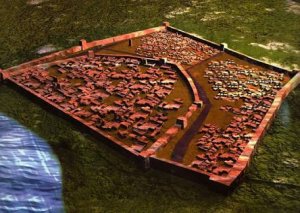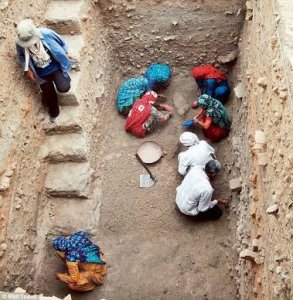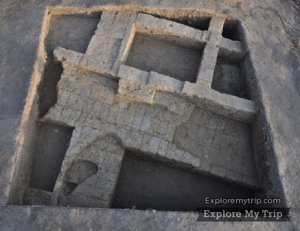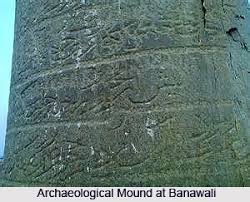Banawali, earlier known as Vanavali is a village and archaeological site situated around 15 km from Fatehabad district of Haryana, India. It belongs to the Indus Valley Civilization period which got settled on the left banks of dried river Saraswati. It was built on the upper middle valley compared to Kalibangan town which was on the lower part.

Banawali An Indus Site in Haryana
The mound built is approximately 10m high and is spread over an area of one square mile. In spite of having less human habitation around this area today, history researchers and archaeologists have been keenly visiting this place which has made it a popular tourist spot! It is indeed under the protection of Government of India.
This civilization existed between the period of 2600-1700 BC which was Early Harappan and Harappan Culture. The excavations yielded three-fold culture namely Pre-Harappan, Harappan and Bara (Post Harappan), which were excavated by Dr. R.S.Bisht, member of Archaeological Survey of India. The Banawali village has a population of 3688, where 1970 are males while 1718 are females (as per Population Census 2011).

The three-fold culture
Pre-Harappan (2600-2400 BC)
This period is known by the existence of really well-planned township and houses made up of molded bricks. In the pottery of this period, pre-Harappan painted motifs tended to become simpler sparse and use of white pigment becomes less popular progressively. A fine variety of the pottery could be compared with Harappan ceramic which included dish-on-stand, basin, trough, jars and bowls and such utensils. Beads of semi-precious stones, terracotta, steatite, and bangles of clay, shell and copper were the other findings.
Harappan Culture (2400-1900 BC)
It is known by the presence of a well-planned fortified township but in a radial pattern. The utensils included sophisticated red ware which had decorations of animal and floral designs comprising dish-on-stand, ‘S’-shaped jar, perforated jar, vase, cooking handis, beaker, basin, and goblet etc. A terracotta plough model was seen to be important as it was assumed to be a rare specimen found so far in Harappan Culture. Other remarkable finds were beads and bangles of semi-precious stones, terracotta and shell, weights and sportsmen of ivory and bone, beads and foil in gold, terracotta animal figurines, inscribed steatite seals and terracotta seals, copper fish-hooks, charred barley grains etc.

Bara Culture (1900-1700 BC)
Pottery was pretty developed by this period, which was sturdy and heavy, made of fine clay, baked carefully and dressed with deep-toned oily gloss. The smaller excavations were very few and excluded all classic Harappan items except terracotta nodules and cakes.
One such finding included a burnished grey ware decorated with two motifs, which was similar to bovine heads occurring in painting on Pre-Harappan pots of Kalibangan. The other one was an unbaked clay figure of an which has deep cut criss-cross incisions on the back as well on one side of the neck, thereby imparting it an appearance of a horse, as the former may suggest the saddle and the latter the mane. Also, an ivory comb, a terracotta cake with an engraved ass, human figures – both male and female, a tortoiseshell etc and many items of gold, silver etc. have also been found. The pottery found in Banawali was comparable with Harappan pottery in fineness and pottery assembling is very similar to assembling of Kalibangan.

This shows how deep interconnected were their roots. Every sequence of culture was followed from the earlier one accordingly. This rich heritage of Banawali beholds its attraction even today and this is why people like historians and researchers choose this place to study! This archaeological site indeed deserves more and more of attention since this era is known by every Indian child! Harappan civilization is altogether a deep research for sure! The historic ruins of Banawali, speak in the favor of it.



